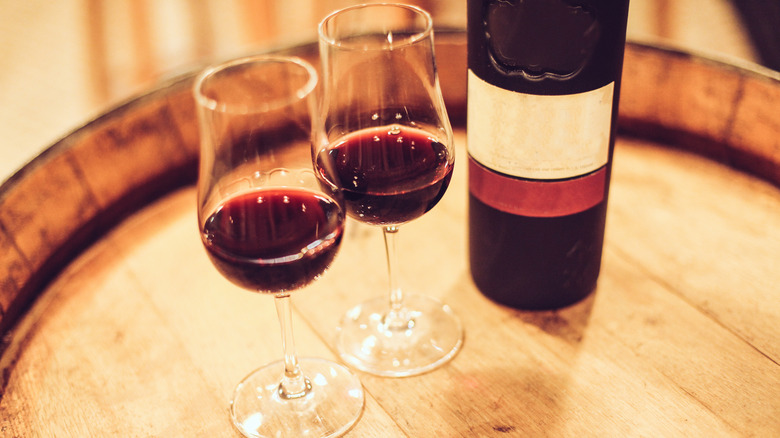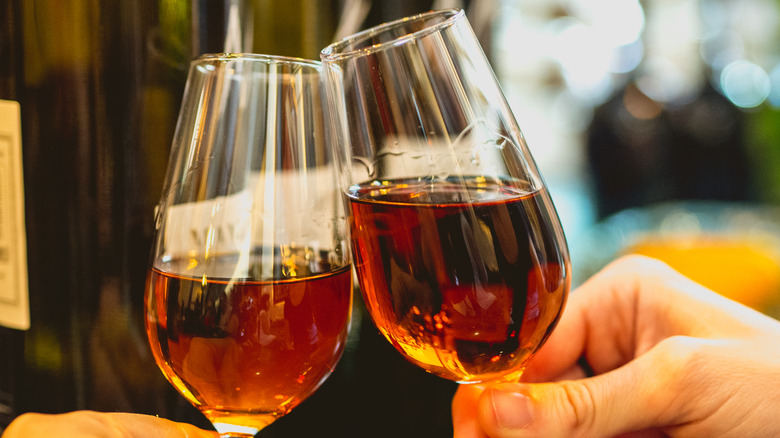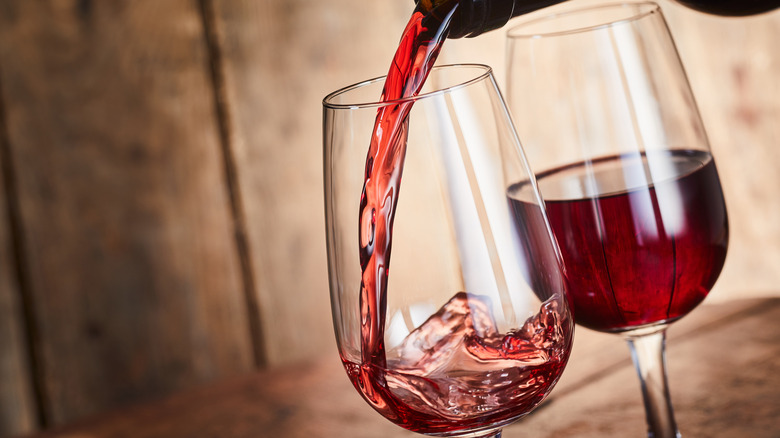Sherry Vs Port: What's The Difference?
Sherry and port share plenty of similarities. The two groups of fortified wines are sticky, and sweet, and pack a decent amount of alcohol with every sip. Whether you're looking to warm up guests before serving dinner or round out a raucous evening with offerings of post-meal debauchery, both sherry and port wines are solid contenders for the task.
These sometimes syrupy pours have been whetting palates of merchants, sailors, and common folk for centuries, but the luxurious-sounding beverages aren't reserved strictly for posh environments and special occasions. Sherry can be used in cooking projects, and port can be drizzled on top of ice cream at the end of any long weekday. Yet as tempting and as easy as it might be for a novice to confuse the categories of these leggy libations, noteworthy differences separate the two. As always, we're here to help make some of these distinctions more clear when it comes to choosing which booze to take home and enjoy.
The many varieties of sherry
Hailing from the south of Spain, bottles of sherry range from dry and bright to thick and syrupy. With fruity blends that provide light, delicate refreshment and other labels that pack a serious punch, a glass of sherry can accompany a variety of dishes. Made specifically with white wine grapes, sherry is fortified right before it is casked in a system that controls differing stages of maturation, and it can be useful to know which sherries are available for purchase.
Lighter Fino presents a crisper tasting experience, perfect to pair with charcuterie boards plated with bacon-fat cookies, almonds, and potato chips; Amontillado sherries offer a distinct nose of hazelnuts that can complement heavier sauces and meats. The unique Pedro Ximénez should be reserved for dessert, as the thick wine carries notes of molasses, toffee, and fruit and is even added to other kinds of sherry to provide sweetness. Creamy dessert sherries can be sipped from glasses or poured onto desserts like ice creams and puddings.
The ABV in sherry can range from 15% up to 22%. Generally, and quite deceivingly, dry sherries contain the lowest ABC, and the sweeter a sherry is to taste, the higher ABV it tends to contain. Look to spend around $15 on a decent bottle of dry sherry and anticipate opening your wallet for sweeter, older varieties.
The sweetness of port
In comparison, port is made in Portugal, and brandy is added in the middle of fermentation, not at the end of the fermentation process as with sherry. By introducing spirits in the middle of fermentation, producers effectively kill yeast in the barrel and block additional fermentation from occurring. The result is a sweet wine that carries a similarly high alcoholic content as sherry.
The ABV of port can range anywhere from 16% to 21% ABV, yet port wines fall into fewer classifications than sherries. Red or white grapes can be used to make ruby and tawny ports, but port made from red grapes is the most common. Younger ruby ports offer sweeter tasting notes, while older tawny ports have been left to age in barrels, resulting in wines with spicy, caramel flavors. Expectedly, tawny ports run a bit higher in cost than bottles of ruby, and anything vintage will push your budget upwards. For a dinner to remember, serve port at the end of a meal alongside carefully assembled cheese boards and pieces of dried fruit.


